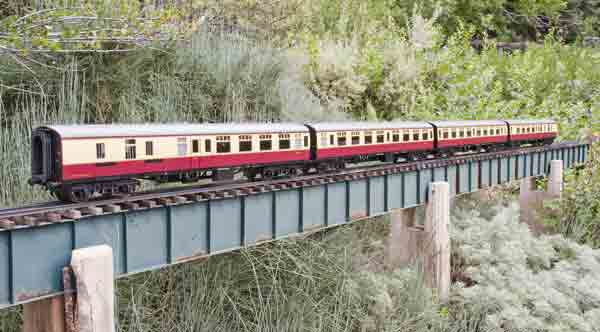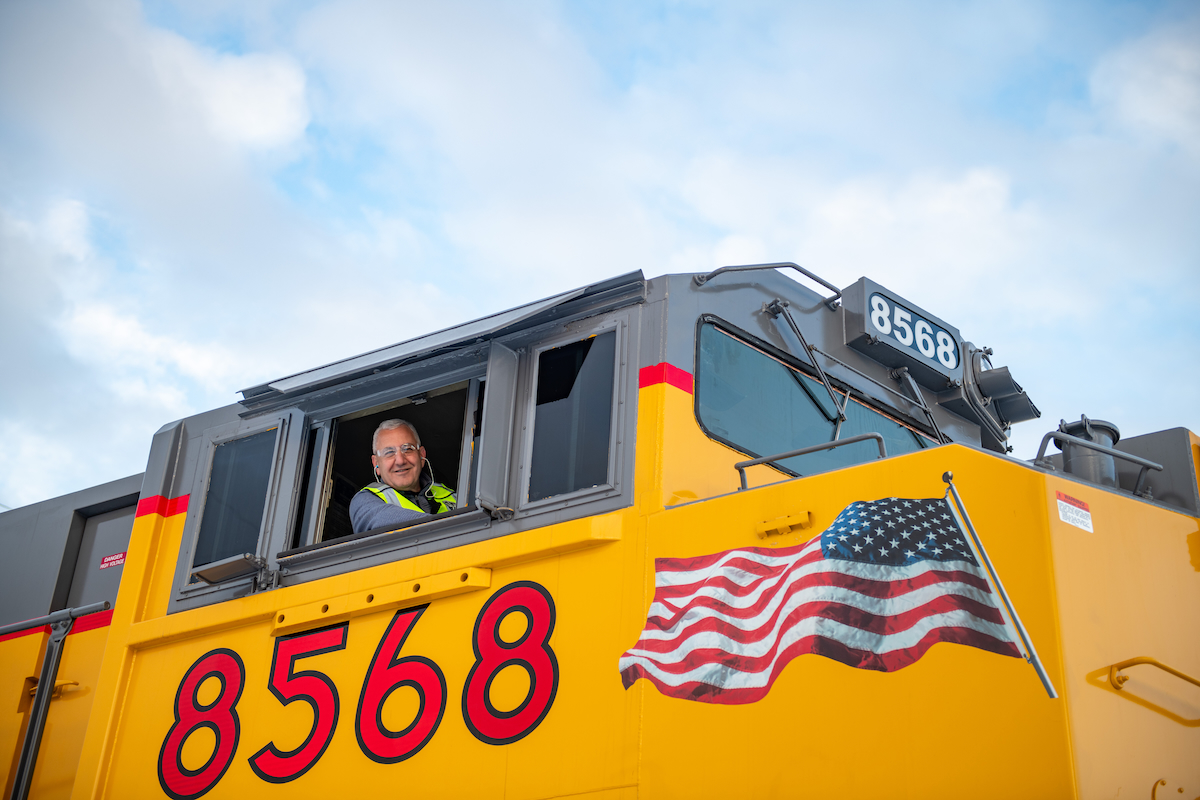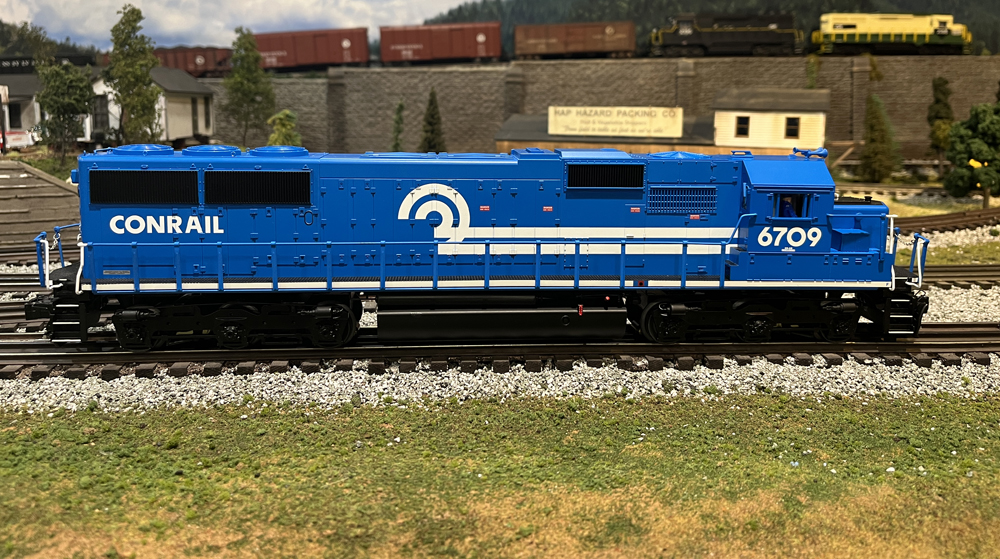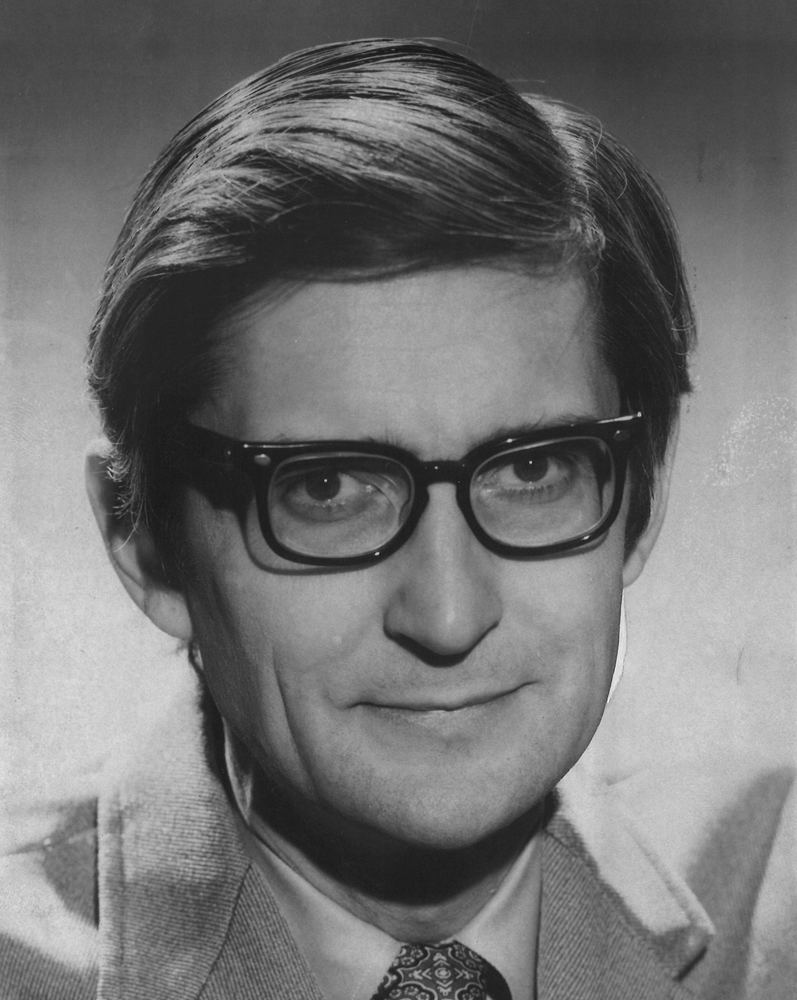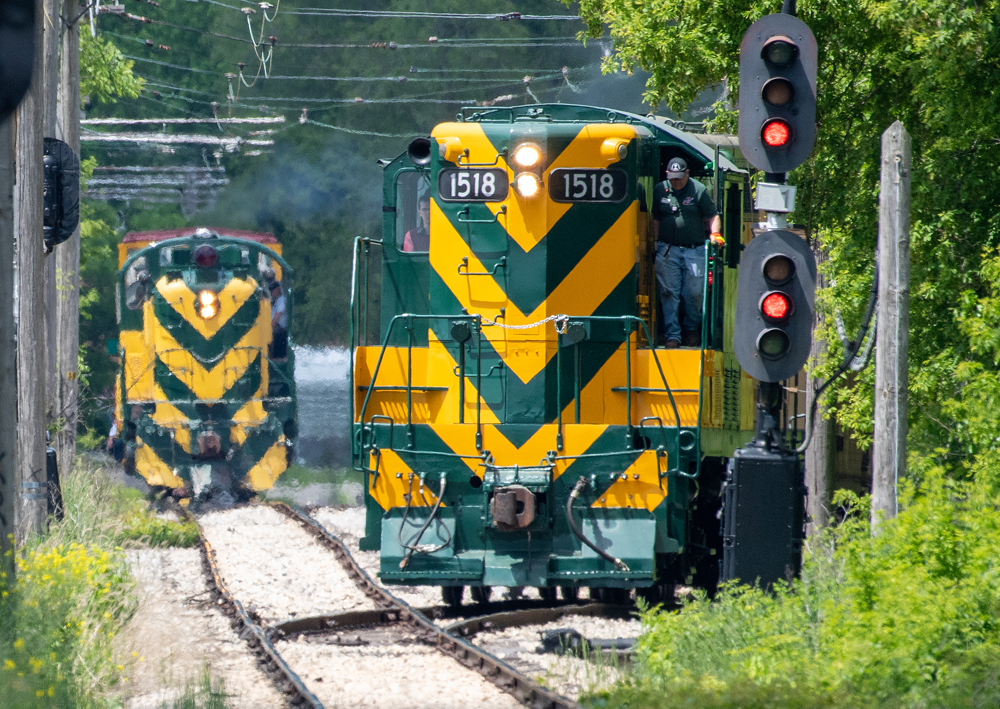The Gauge 1 Model Railway Co.
PO Box 509
Chatham, Kent ME5 7XE UK
Available in the US from:
Accucraft
33268 Central Ave.
Union City CA 94587
Price: $1,276/four-car set
Website: www.accucraft.com
Gauge 1, 1:32 scale, British Mk. I coaches; plastic bodies; full interiors; Kadee couplers; sprung buffers; diecast, unsprung trucks; metal wheels; supplied in four-car sets or individually. Dimensions: length over end beams (per coach), 233/4″; width, 31/4″; height, 43/4″. In 1:32 scale, this works out to 63’4″ x 8’8″ x 12’8″, respectively
Pros: High fidelity to prototype; good level of detail; excellent paint and graphics; free-rolling trucks; close coupling; several liveries available; cars have different road numbers
Cons: Trucks are neither sprung nor equalized; some add-on details are tiny (door handles)
That said, these are fine models. The bodies are all plastic, as is most of the added-on detail. They are available in a variety of liveries. Our review samples are painted crimson and cream, or “blood and custard,” as they were commonly known. The paint and graphics are up to Accucraft’s usual high standard, including the sharp, crisp lettering on the frame. The cars are supplied in four-car sets that include two corridor coaches and two brake/corridor coaches. Each car in the set has a different number.
The brake/coaches have a standard British three-link coupler on one end and mounting pads for Kadee couplers at the other. If you wish, the three-link couplers can be removed and Kadees fitted to those ends as well. Kadee couplers were supplied separately on our samples and had to be assembled and installed. This was no big deal—the coupler pockets screwed right into the holes supplied on the bodies.
These are models of corridor coaches, with a corridor running along one side and separate compartments for passengers on the other. Interior seats and walls are visible through the windows and they look correct. A small bag of additional parts is supplied. These include brake hoses, lamp irons, and door handles. The brake hoses I found difficult to fit and decided to leave them off, as they would be vulnerable anyway and didn’t add that much to the car. The lamp irons were a mystery, as the cars already had them on both ends. The door handles are minute moldings. I had to install them with tweezers, using a magnifying visor.
Car ends are fitted with soft plastic or rubber diaphragms. These do not compress. However, when the cars are coupled, the diaphragms touch and they look right. They are soft enough to flex slightly as the cars round a curve. Each car is fitted with four sprung oval-head buffers. The springing is moot, however, as the buffers never touch one another.
Trucks (bogies) are all metal. The frames are diecast and are neither sprung nor equalized. If your track is reasonably good, this will not be a problem. These are long cars and have limited swing on the trucks, so wide-radius curves are the order of the day—probably nothing less than around 10′ radius. The wheels are metal, with close-to-scale flange profiles. They’re also insulated for two-rail electrical operation. The trucks are free rolling, making for smooth operation.
Underbody detail is fairly spartan, but you have to turn the car over to realize that. As long as it is sitting on the rails, everything looks right.
These new coaches are welcome additions to ready-to-run British rolling stock. They capture the feel of the full-size coaches beautifully, including the slight tumblehome (body curvature) of the prototype, and they look great in a train.





